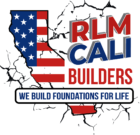A Quick and Easy Guide to House Leveling
Are you curious about house leveling and want to find out more? If that’s the case, you’ve come to the correct place. This quick and easy guide will walk you through the fundamentals of house leveling and lead you in the proper way to find further material that is more in-depth.
Every basis is eventually laid to rest.
Even brand-new homes experience some degree of foundation movement as they settle into the ground over time. This is totally natural, and there is no reason to be concerned as long as the setting is consistent across the entire house (that is, occurring in the same amount in each region at the same rate).
There is a phenomenon known as differential settling that is causing the issue. This occurs when the home is settling, but not in the same manner everywhere. To put it another way, various parts of the home are sinking at varying speeds relative to one another. This causes the foundation to become stressed, which leads to uneven flooring, and cracks in the walls, floors, ceilings, and windows that are not in the correct vertical alignment.
What exactly does “house leveling” mean?
The process of house leveling is a type of foundation restoration that involves lifting and leveling a house that has settled in order to return it to its original position.
Why does the foundation of home settle at various rates in different areas?
Varying parts of a house might settle at different rates due to a variety of factors, including…
-An excessive amount of moisture in the ground. Both improper drainage around the foundation and plumbing leaks under the foundation can lead to this problem. Poor drainage around the foundation can also cause water damage.
-Complications with the tree’s roots. Tree roots are constantly on the lookout for water, and if they are successful in extracting all of the moisture from the soil beneath a foundation, the earth will dry out, which will cause the foundation to become unstable.
-Expansive soil. Soils that contract as they lose their moisture and expand when they take it in are said to have expansive properties. To put it another way, the ground is not stable. It has a lot of motion. A foundation will become increasingly unstable as a result of this movement over time.
-This is poor construction. Differential settlement in the structure can occur later on if the soil beneath the foundation was not correctly compacted before the construction of the building. This can happen if the soil wasn’t properly compacted.
As was just discussed, every construction experiences some degree of settlement over time, which is a totally normal phenomenon. There is no cause for concern provided that the settling is consistent across the entire area. The issue lies in the abnormally divergent settlement, which is the source of the difficulty.
In the event that you suspect that your home is sinking or that it needs to be leveled, the first thing you should do is get in touch with an expert foundation professional and ask them to evaluate your property. They will be able to explain to you what is wrong with the house as well as the most effective way to make the necessary repairs. Look no further than RLM Retrofit Foundation for a free Foundation Inspection Near Me Los Angeles .
Are You Guilty of Committing Any of these Foundation Drainage mistakes Los Angeles










